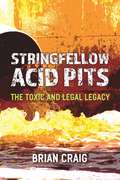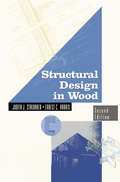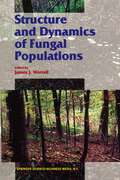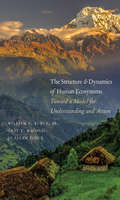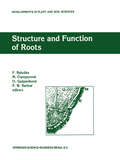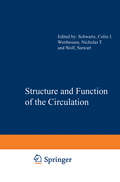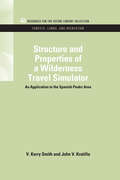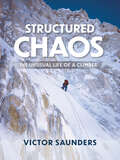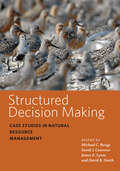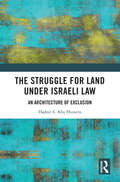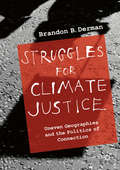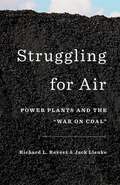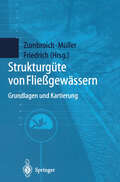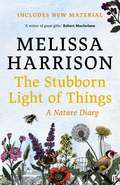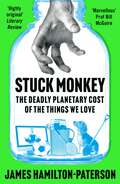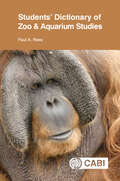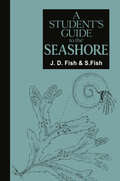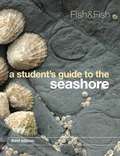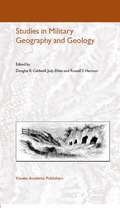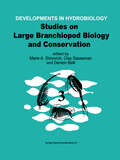- Table View
- List View
Stringfellow Acid Pits: The Toxic and Legal Legacy
by Brian CraigStringfellow Acid Pits tells the story of one of the most toxic places in the United States, and of an epic legal battle waged to clean up the site and hold those responsible accountable. In 1955, California officials approached rock quarry owner James Stringfellow about using his land in Riverside County, east of Los Angeles, as a hazardous dump site. Officials claimed it was a natural waste disposal site because of the impermeable rocks that underlay the surface. They were gravely mistaken. Over 33 million gallons of industrial chemicals from more than a dozen of the nation’s most prominent companies poured into the site’s unlined ponds. In the 1960s and 1970s, heavy rains forced surges of chemical-laden water into Pyrite Creek and the nearby town of Glen Avon. Children played in the froth, making fake beards with the chemical foam. The liquid waste contaminated the groundwater, threatening the drinking water for hundreds of thousands of California residents. Penny Newman, a special education teacher and mother, led a grassroots army of so-called “hysterical housewives” who demanded answers and fought to clean up the toxic dump. The ensuing three-decade legal saga involved more than 1,000 lawyers, 4,000 plaintiffs, and nearly 200 defendants, and led to the longest civil trial in California history. The author unveils the environmental and legal history surrounding the Stringfellow Acid Pits through meticulous research based on personal interviews, court records, and EPA and other documents. The contamination at the Stringfellow site will linger for hundreds of years. The legal fight has had an equally indelible influence, shaping environmental law, toxic torts, appellate procedure, takings law, and insurance coverage, into the present day.
Structural Design in Wood (VNR Structural Engineering Series)
by Judith Stalnaker Ernest HarrisThe prime purpose of this book is to serve as a design is of considerable value in helping the classroom text for the engineering or architec student make the transition from the often sim ture student. It will, however, also be useful to plistic classroom exercises to problems of the designers who are already familiar with design real world. Problems for solution by the student in other materials (steel, concrete, masonry) but follow the same idea. The first problems in each need to strengthen, refresh, or update their capa subject are the usual textbook-type problems, bility to do structural design in wood. Design but in most chapters these are followed by prob principles for various structural materials are lems requiring the student to make structural similar, but there are significant differences. planning decisions as well. The student may be This book shows what they are. required, given a load source, to find the magni The book has features that the authors believe tude of the applied loads and decide upon a set it apart from other books on wood structural grade of wood. Given a floor plan, the student design. One of these is an abundance of solved may be required to determine a layout of struc examples. Another is its treatment of loads. This tural members. The authors have used most of book will show how actual member loads are the problems in their classes, so the problems computed. The authors have found that students, have been tested.
Structure and Dynamics of Fungal Populations (Population and Community Biology Series #25)
by J. WorrallFungi are among the most versatile and diverse groups of organisms in their morphology, life cycles, and ecology. This has provided endless fasci nation and intrigue to those who have studied fungi, but it has also made it difficult to understand fungal biology from the perspective of the broader fields of evolution, ecology, genetics, and population biology. That is changing. Details of fungal biology have been elucidated at an exciting pace, increasingly allowing us to understand fungi on the bases of general biological principles. Moreover, many who study fungi have lately emulated some of the great mycologists and plant pathologists of the early years in applying an insight born of broad perspective. This change has been particularly apparent in fungal population biology. In this book, many of those at the forefront of that change summarize, integrate and comment on recent developments and ideas on populations of fungi. By taking a broad perspective, they show how new information on fungi may contribute to concepts and ideas of biology as a whole. Just as important, they contribute to further invigoration of fungal population research by illuminating mycology with new ideas and concepts, derived in part from other biological fields.
The Structure and Dynamics of Human Ecosystems: Toward a Model for Understanding and Action
by William R. Burch Jr. Gary E. Machlis Jo Ellen ForceA landmark book that strives to provide both grand theory and practical application, innovatively describing the structure and dynamics of human ecosystems As the world faces ever more complex and demanding environmental and social challenges, the need for interdisciplinary models and practical guidance becomes acute. The Human Ecosystem Model described in this landmark book provides an innovative response. Broad in scope, detailed in method, at once theoretical and applied, this grand study offers an in-depth understanding of human ecosystems and tools for action. The authors draw from Goethe’s Faust, classic anthropology and sociology studies, contemporary ecosystem ecology, Buddhist ethics, and more to create a paradigm-shifting model and a major advance in interdisciplinary ecology.
Structure and Function of Roots: Proceedings of the Fourth International Symposium on Structure and Function of Roots, June 20–26, 1993, Stará Lesná, Slovakia (Developments in Plant and Soil Sciences #58)
by F. Baluska Milada Ciamporová Otília Gasparíková Peter W. BarlowIn 1971, the late Dr. J. Kolek of the Institute of Botany, Bratislava, organized the first International Symposium devoted exclusively to plant roots. At that time, perhaps only a few of the participants, gathered together in Tatranska Lomnica, sensed that a new era of root meetings was beginning. Nevertheless, it is now clear that Dr. Kolek's action, undertaken with his characteristic enormous enthusiasm, was rather pioneering, for it started a series a similar meetings. Moreover, what was rather exceptional at the time was the fact that the meeting was devoted to the functioning of just a single organ, the root. One possible reason for the unexpected success of the original, perhaps naive, idea of a Root Symposium might lie with the fact that plant roots have always been extremely popular as experimental material for cytologists, biochemists and physiologists whishing to probe processes as diverse as cell division and solute transport. Of course, the connection of roots with the rest of the plant is not forgotten either. This wide variety of disciplines is now coupled with the development of increasingly sophisticated experimental techniques to study some of these old problems. These factors undoubtedly contribute to the necessity of continuing the tradition of the root symposia. The common theme of root function gives, in addition, a certain unity to all these diverse activities.
Structure and Function of the Circulation
by Colin J. SchwartzIn order to produce a superior scholarly treatise in bio medical science, three important conditions need to be met. First, the subject needs to be of recognized importance and preferably one in which a sizeable volume of new knowledge has been added recently. Second, it needs to be quite evident that the field involved re quires much more up-to-date coverage than it has received and third, the choice of the editors and in turn the authors needs to be recognized as outstanding. This major treatise fills these criteria in an admirable way. There are few who would deny the importance of knowledge concerning the circulatory system. This all pervasive system is the route by which virtually all of the cells and tissues of the body receive their nutrition and it is the major route by which metabolic waste products are carried away. Furthermore, the diseases that involve the circulatory system are, by far, the underlying causes of death and morbidity in the largest number of Americans, Western Europeans and several other populations of industrialized nations. Not only is atherosclerosis-induced-ischemic disease of the heart, brain and extremities widespread in these populations but venous occlusive disease also takes a great toll from phlebothrombosis, pulmonary embolism, etc.
Structure and Properties of a Wilderness Travel Simulator: An Application to the Spanish Peaks Area (RFF Forests, Lands, and Recreation Set)
by V. Kerry Smith John V. KrutillaFirst Published in 2011. Routledge is an imprint of Taylor & Francis, an informa company.
Structure and Properties of a Wilderness Travel Simulator: An Application to the Spanish Peaks Area (RFF Forests, Lands, and Recreation Set)
by V. Kerry Smith John V. KrutillaFirst Published in 2011. Routledge is an imprint of Taylor & Francis, an informa company.
Structured Chaos: The unusual life of a climber
by Victor Saunders‘Mountains have given structure to my adult life. I suppose they have also given me purpose, though I still can’t guess what that purpose might be. And although I have glimpsed the view from the mountaintop and I still have some memory of what direction life is meant to be going in, I usually lose sight of the wood for the trees. In other words, I, like most of us, have lived a life of structured chaos.’Structured Chaos is Victor Saunders’ follow-up to Elusive Summits (winner of the Boardman Tasker Prize in 1990), No Place to Fall and Himalaya: The Tribulations of Vic & Mick. He reflects on his early childhood in Malaya and his first experiences of climbing as a student, and describes his progression from scaling canal-side walls in Camden to expeditions in the Himalaya and Karakoram. Following climbs on K2 and Nanga Parbat, he leaves his career as an architect and moves to Chamonix to become a mountain guide. He later makes the first ascent of Chamshen in the Saser Kangri massif, and reunites with old friend Mick Fowler to climb the north face of Sersank.This is not just a tale of mountaineering triumphs, but also an account of rescues, tragedies and failures. Telling his story with humour and warmth, Saunders spans the decades from youthful awkwardness to concerns about age-related forgetfulness, ranging from ‘Where did I put my keys?’ to ‘Is this the right mountain?’Structured Chaos is a testament to the value of friendship and the things that really matter in life: being in the right place at the right time with the right people, and making the most of the view.
Structured Decision Making: Case Studies in Natural Resource Management (Wildlife Management and Conservation)
by David R. SmithWhen faced with complicated, potentially controversial decisions that affect our environment, many resource management agencies have come to realize the value of structured decision making (SDM)—the systematic use of principles and tools of decision analysis. Few professionals, however, have extensive experience implementing SDM. Structured Decision Making provides key information to both current adopters of the method and those who are deploying it for the first time by demonstrating the formal use of decision analysis to support difficult, real-world natural resource management decisions. Drawing on case studies from multiple public agencies in the United States, Canada, Australia, and Mauritius, the editors present an overview of decision analysis, a classification of decision types, and a catalog of decision analysis methods. Dozens of detailed charts and maps help contextualize the material. These case studies examine a rich variety of topics, including• keeping forest birds free from disease• conserving imperiled freshwater mussels• managing water for oil sands mining• dealing with coastal wetlands in the face of sea-level rise• designing networks for prairie-dependent taxa• combatting invasive alpine shrubs• managing vernal pool habitats for obligate amphibian species • and much moreAimed at decision makers tackling natural resource challenges in government agencies around the world, as well as advanced undergraduate and graduate students preparing to work in natural resource management, Structured Decision Making shows how SDM can be implemented to achieve optimal outcomes that integrate social values and scientific understanding.Contributors: Taber D. Allison, Larissa L. Bailey, Ellen A. Bean, Clint W. Boal, Gregory Breese, Stefano Canessa, Jean Fitts Cochrane, Sarah J. Converse, Cami S. Dixon, John G. Ewen, Christelle Ferrière, Jill J. Gannon, Beth Gardner, Adam W. Green, Justin A. Gude, Victoria M. Hunt, Kevin S. Kalasz, Melinda G. Knutson, Jim Kraus, Graham Long, Eric V. Lonsdorf, James E. Lyons, Conor P. McGowan, Sarah E. McRae, Michael S. Mitchell, Clinton T. Moore, Joslin L. Moore, Steven Morey, Dan W. Ohlson, Charlie Pascoe, Andrew Paul, Eben H. Paxton, Lori B. Pruitt, Michael C. Runge, Sarah N. Sells, Terry L. Shaffer, Stephanie Slade, David R. Smith, Jennifer A. Szymanski, Terry Walshe, Nicolas Zuël
Structured Decision Making: Case Studies in Natural Resource Management (Wildlife Management and Conservation)
by David R. SmithWhen faced with complicated, potentially controversial decisions that affect our environment, many resource management agencies have come to realize the value of structured decision making (SDM)—the systematic use of principles and tools of decision analysis. Few professionals, however, have extensive experience implementing SDM. Structured Decision Making provides key information to both current adopters of the method and those who are deploying it for the first time by demonstrating the formal use of decision analysis to support difficult, real-world natural resource management decisions. Drawing on case studies from multiple public agencies in the United States, Canada, Australia, and Mauritius, the editors present an overview of decision analysis, a classification of decision types, and a catalog of decision analysis methods. Dozens of detailed charts and maps help contextualize the material. These case studies examine a rich variety of topics, including• keeping forest birds free from disease• conserving imperiled freshwater mussels• managing water for oil sands mining• dealing with coastal wetlands in the face of sea-level rise• designing networks for prairie-dependent taxa• combatting invasive alpine shrubs• managing vernal pool habitats for obligate amphibian species • and much moreAimed at decision makers tackling natural resource challenges in government agencies around the world, as well as advanced undergraduate and graduate students preparing to work in natural resource management, Structured Decision Making shows how SDM can be implemented to achieve optimal outcomes that integrate social values and scientific understanding.Contributors: Taber D. Allison, Larissa L. Bailey, Ellen A. Bean, Clint W. Boal, Gregory Breese, Stefano Canessa, Jean Fitts Cochrane, Sarah J. Converse, Cami S. Dixon, John G. Ewen, Christelle Ferrière, Jill J. Gannon, Beth Gardner, Adam W. Green, Justin A. Gude, Victoria M. Hunt, Kevin S. Kalasz, Melinda G. Knutson, Jim Kraus, Graham Long, Eric V. Lonsdorf, James E. Lyons, Conor P. McGowan, Sarah E. McRae, Michael S. Mitchell, Clinton T. Moore, Joslin L. Moore, Steven Morey, Dan W. Ohlson, Charlie Pascoe, Andrew Paul, Eben H. Paxton, Lori B. Pruitt, Michael C. Runge, Sarah N. Sells, Terry L. Shaffer, Stephanie Slade, David R. Smith, Jennifer A. Szymanski, Terry Walshe, Nicolas Zuël
The Struggle for Land Under Israeli Law: An Architecture of Exclusion
by Hadeel S. Abu HusseinThis book provides a comprehensive examination of land law for Arab Palestinians under Israeli law. Land is one of the core resources of human existence, development and activity. Therefore, it is also a key basis of political power and of social and economic status. Land regimes and planning regulations play a dynamic role in deciding how competing claims over resources will be resolved. According to legal geography, spatial ordering impacts legal regimes; whilst legal rules form social and human space. Through the lenses of international law, colonisation and legal geography, the book examines the land regime in Israel. More specifically, it endeavours to understand the spatial strategies adopted by Israel to organise the entire territorial expanse of the country as Jewish, while also excluding Arab Palestinian citizens of Israel and residents of East Jerusalem from the landscape. The book then details how the systematic nature and processes of marginalisation are mapped out across the civil, political and socio-economic landscape. This monograph will be of interest to international legal theorists, legal geographers, land lawyers and human rights practitioners and students; as well as to international scholars, NGOs and others focusing on the Israeli–Palestinian conflict.
The Struggle for Land Under Israeli Law: An Architecture of Exclusion
by Hadeel S. Abu HusseinThis book provides a comprehensive examination of land law for Arab Palestinians under Israeli law. Land is one of the core resources of human existence, development and activity. Therefore, it is also a key basis of political power and of social and economic status. Land regimes and planning regulations play a dynamic role in deciding how competing claims over resources will be resolved. According to legal geography, spatial ordering impacts legal regimes; whilst legal rules form social and human space. Through the lenses of international law, colonisation and legal geography, the book examines the land regime in Israel. More specifically, it endeavours to understand the spatial strategies adopted by Israel to organise the entire territorial expanse of the country as Jewish, while also excluding Arab Palestinian citizens of Israel and residents of East Jerusalem from the landscape. The book then details how the systematic nature and processes of marginalisation are mapped out across the civil, political and socio-economic landscape. This monograph will be of interest to international legal theorists, legal geographers, land lawyers and human rights practitioners and students; as well as to international scholars, NGOs and others focusing on the Israeli–Palestinian conflict.
Struggles for Climate Justice: Uneven Geographies and the Politics of Connection
by Brandon Barclay DermanThis book provides an accessible but intellectually rigorous introduction to the global social movement for ‘climate justice’ and addresses the socially uneven consequences of anthropogenic climate change.Deploying relational understandings of nature-society, space, and power, Brandon Derman shows that climate change has been co-produced with social inequality. Mismatching levels of responsibility and vulnerability, and institutions that emerged in tandem with those disproportionalities compose the terrain on which NGOs and social movements now contest climate injustice in a wide-ranging “politics of connection.” Case-based chapters explore the defining commitments of affected and allied communities, and how they have shaped specific struggles mobilizing human rights, international treaties, transnational activist forums, national and local constituencies, and broad-based demonstrations. Derman synthesizes these cases and similar efforts across the globe to identify and explore crosscutting themes in climate justice politics as well as the opportunities and dilemmas facing advocates and activists, and those who would ally with them going forward. How should we understand campaigns for climate justice? What do these initiatives share, and what differentiates them? What, in fact, does “climate justice” mean in these contexts? And what do the framing and progression of such efforts in different settings suggest about the broader conditions that produce and sustain climate injustice, how those conditions could be unmade, and what might take their place? Struggles for Climate Justice approaches these questions from an interdisciplinary perspective accessible to graduate and advanced undergraduate students as well as scholars of geography, social movements, environmental politics, policy, and socio-legal studies.
Struggling for Air: Power Plants and the "War on Coal"
by Richard Revesz Jack LienkeSince the beginning of the Obama Administration, conservative politicians have railed against the President's "War on Coal." As evidence of this supposed siege, they point to a series of rules issued by the Environmental Protection Agency that aim to slash air pollution from the nation's power sector . Because coal produces far more pollution than any other major energy source, these rules are expected to further reduce its already shrinking share of the electricity market in favor of cleaner options like natural gas and solar power. But the EPA's policies are hardly the "unprecedented regulatory assault " that opponents make them out to be. Instead, they are merely the latest chapter in a multi-decade struggle to overcome a tragic flaw in our nation's most important environmental law. In 1970, Congress passed the Clean Air Act, which had the remarkably ambitious goal of eliminating essentially all air pollution that posed a threat to public health or welfare. But there was a problem: for some of the most common pollutants, Congress empowered the EPA to set emission limits only for newly constructed industrial facilities, most notably power plants. Existing plants, by contrast, would be largely exempt from direct federal regulation-a regulatory practice known as "grandfathering." What lawmakers didn't anticipate was that imposing costly requirements on new plants while giving existing ones a pass would simply encourage those old plants to stay in business much longer than originally planned. Since 1970, the core problems of U.S. environmental policy have flowed inexorably from the smokestacks of these coal-fired clunkers, which continue to pollute at far higher rates than their younger peers. In Struggling for Air, Richard L. Revesz and Jack Lienke chronicle the political compromises that gave rise to grandfathering, its deadly consequences, and the repeated attempts-by presidential administrations of both parties-to make things right.
Struggling for Air: Power Plants and the "War on Coal"
by Richard Revesz Jack LienkeSince the beginning of the Obama Administration, conservative politicians have railed against the President's "War on Coal." As evidence of this supposed siege, they point to a series of rules issued by the Environmental Protection Agency that aim to slash air pollution from the nation's power sector . Because coal produces far more pollution than any other major energy source, these rules are expected to further reduce its already shrinking share of the electricity market in favor of cleaner options like natural gas and solar power. But the EPA's policies are hardly the "unprecedented regulatory assault " that opponents make them out to be. Instead, they are merely the latest chapter in a multi-decade struggle to overcome a tragic flaw in our nation's most important environmental law. In 1970, Congress passed the Clean Air Act, which had the remarkably ambitious goal of eliminating essentially all air pollution that posed a threat to public health or welfare. But there was a problem: for some of the most common pollutants, Congress empowered the EPA to set emission limits only for newly constructed industrial facilities, most notably power plants. Existing plants, by contrast, would be largely exempt from direct federal regulation-a regulatory practice known as "grandfathering." What lawmakers didn't anticipate was that imposing costly requirements on new plants while giving existing ones a pass would simply encourage those old plants to stay in business much longer than originally planned. Since 1970, the core problems of U.S. environmental policy have flowed inexorably from the smokestacks of these coal-fired clunkers, which continue to pollute at far higher rates than their younger peers. In Struggling for Air, Richard L. Revesz and Jack Lienke chronicle the political compromises that gave rise to grandfathering, its deadly consequences, and the repeated attempts-by presidential administrations of both parties-to make things right.
Strukturgüte von Fließgewässern: Grundlagen und Kartierung
by Thomas Zumbroich Andreas Müller Günther FriedrichThe Stubborn Light of Things: A Nature Diary
by Melissa HarrisonA nature diary by award-winning novelist, nature writer and hit podcaster Melissa Harrison, following her journey from urban south London to the rural Suffolk countryside.'A writer of great gifts.' Robert Macfarlane'A nature writer with a knowledge and eye for detail that recalls Thomas Hardy and John McGahern.' The TimesWhen I lived in London I barely noticed the winter solstice. Nothing slowed, contracted or dimmed to mark the shortest day of the year, for, like all cities, London has all but left such trifling considerations behind. But now I am in Suffolk, and the difference could not be more marked. I wake in dim half-light, the yellow windows of nearby farmhouses glimmering across frost-white fields. At three the rooks begin to gather in the leafless trees, and flocks of starlings start to move from place to place. When darkness falls, the nights are blacker than I've ever seen, the starfield so breathtaking that Orion and the Plough are lost amid a million other points of light.The Stubborn Light of Things will transform the way you see the world.A Londoner for over twenty years, moving from flat to Tube to air-conditioned office, Melissa Harrison knew what it was to be insulated from the seasons. Adopting a dog and going on daily walks helped reconnect her with the cycle of the year and the quiet richness of nature all around her: swifts nesting in a nearby church; ivy-leaved toadflax growing out of brick walls; the first blackbird's song; an exhilarating glimpse of a hobby over Tooting Common.Moving from scrappy city verges to ancient, rural Suffolk, where Harrison eventually relocates, this diary - compiled from her beloved Nature Notebook column in The Times - maps her joyful engagement with the natural world and demonstrates how we must first learn to see, and then act to preserve, the beauty we have on our doorsteps - no matter where we live.A perceptive and powerful call-to-arms written in mesmerising prose, The Stubborn Light of Things confirms Harrison as a central voice in British nature writing.
Stuck Monkey: The Deadly Planetary Cost of the Things We Love
by James Hamilton-PatersonPeople hunting monkeys in the jungle once devised a simple yet effective trap: When the creature found a banana in a large jar with a narrow neck, it would plunge its paw in to retrieve it. But it couldn't let go. And unless the monkey released the banana, it was stuck.We are, of course, the stuck monkey, paralysed by our modern lifestyles and consumer habits: our constant stream of online shopping deliveries, our compulsive dependence on digital devices, our obsession with ourpets. These addictions, as small and harmless as they may seem, are quietly destroying the planet. And the eco-friendly alternatives that alleviate our guilt are often not much better.In Stuck Monkey, James Hamilton-Paterson uncovers the truth behind the everyday habits fuelling the climate crisis. Drawing on eye-opening research and shocking statistics, he mercilessly dissects a wide spectrum of modern life: pets, gardening, sports, vehicles, fashion, wellness, holidays, and more. Ferociously unflinching andintelligent, this book will make you think twice about the 'innocent' habits we often take for granted.
Stuckie Duckie Balloon (Bing)
by HarperCollins Children’s BooksA brilliant new picture book about sharing based on the award-winning CBeebies show Bing!
Students' Dictionary of Zoo and Aquarium Studies
by Dr Paul ReesThis Students' Dictionary of Zoo and Aquarium Studies contains over 5,000 terms (illustrated by 88 figures) used in zoos, aquariums, safari parks, birds of prey centres, petting zoos, animal rescue centres and other facilities that make up the 'zoo industry'. It covers a wide range of topics including animal behaviour, animal husbandry, animal welfare, ecology, law, taxonomy, classification, nutrition, parasitology, physiology, reproduction, experimental design, statistics, veterinary science, disease, visitor studies, water management, wildlife conservation and zoo design and architecture. It should be of great interest to those studying zoo biology, animal management, veterinary science and related subjects along with zookeepers and aquarists in the early stages of their careers. Dr Paul Rees has a long-standing interest in animals and in zoos. He has taught a wide range of subjects including ecology, animal behaviour, zoo biology, and wildlife and zoo law. While lecturing at the University of Salford he created the first undergraduate programme in Wildlife Conservation and Zoo Biology in the United Kingdom and over a period of some 20 years was an external examiner for BSc and MSc programmes in zoo biology and wildlife conservation at the Universities of Edinburgh, Chester, Staffordshire, Wolverhampton, Gloucestershire and Nottingham Trent University. Dr Rees has published research on the large mammal fauna of Ngorongoro Crater, Tanzania, the ecology and behaviour of elephants and cheetahs living in zoos, and the laws concerning wildlife reintroductions and the regulation of zoos.
A Student’s Guide to the Seashore
by J.D. FishAt one time or another, we have all been drawn by the fascination of the seashore. For the holiday maker, the relaxing day by the sea often turns out to be a most rewarding foray among rock pools and dense canopies of seaweed; for naturalists and students, the shore is one of the most challenging habitats. Whatever our interests and expertise, one of our first objectives when faced with the diversity of plant and animal life on the shore is to name the individual specimens and we quickly learn that this can be a difficult, though rewarding, occupation. Once an organism has been identified, a number of questions naturally follow. What is its life-cycle? How does it feed and reproduce? How long does it live? The answers to such questions give an insight into the lives of the plants and animals of the shore and are one of the first steps in an understand ing of the complexity of the shore environment. However, the information required to answer such questions is not always easily accessible and even when it is known it is often scattered in various books and research journals making it difficult and time consuming to find. Although a variety of identification keys and guides is available, some designed for the specialist, others for the amateur, such texts generally give little, if any, information on the biology of the organisms.
A Student's Guide To The Seashore (PDF)
by J. D. Fish Susan FishThis unique, concise and beautifully-illustrated guide allows students to identify over 650 of the common, widespread animals and seaweeds of the shore. User-friendly dichotomous keys are supported by details of diagnostic features and biology of each species. Now enhanced with 32 pages of colour, this much acclaimed guide is invaluable to students of marine biology at any level. Questions such as how does the species reproduce? What is its life-cycle? How does it feed? are answered in the notes accompanying each species to give a fascinating insight into the diversity and complexity of life on the shore. The text is supported by an extensive glossary of scientific terms and a comprehensive bibliography is included to aid further study. The third edition builds on the excellent reviews of earlier editions and will continue to appeal to a wide readership, including students, teachers and naturalists.
Studies in Military Geography and Geology
by Douglas R. Caldwell Judy Ehlen Russell S. HarmonA selection of papers on a broad range of military topics ranging from the strategic perspective, through analyses of historical battles at the operational and tactical levels, to the use of advanced technologies applied to present-day military problems.
Studies on Large Branchiopod Biology and Conservation (Developments in Hydrobiology #125)
by Marie A. Simovich Clay Sassaman Denton BelkThis volume is a collection of papers concerning the biology of large branchiopod crustaceans: Anostraca, Conchostraca, and Notostraca. Many of the individual papers were first presented at the Third International Large Branchiopod Symposium (ILBS-3) held at the University of San Diego, CA, USA, July 15-18, 1996. Contributions on additional topics from participants at the symposium, and from colleagues not able to join us in San Diego, are also included. In addition, there is a supplement to the 1995 `Checklist of the Anostraca'. The theme of the ILBS-3 was `understanding and conserving large branchiopod diversity'. Researchers from around the world presented papers on a variety of topics related to conservation of large branchiopods, with contributions ranging from alpha-taxonomy and zoogeography to community structure and studies of ecology and evolution. One important issue developed in many of the papers in this volume is the need to advance our understanding of basic aspects of branchiopod biology throughout the world in order to enhance our efforts to conserve them. Although we have made important strides in understanding the biology of large branchiopods, we have, with few notable exceptions, made little progress in assuring the conservation of their diversity. We hope this volume will supply the reader with new ideas, and generate enthusiasm for research and public education efforts on behalf of branchiopod conservation.
